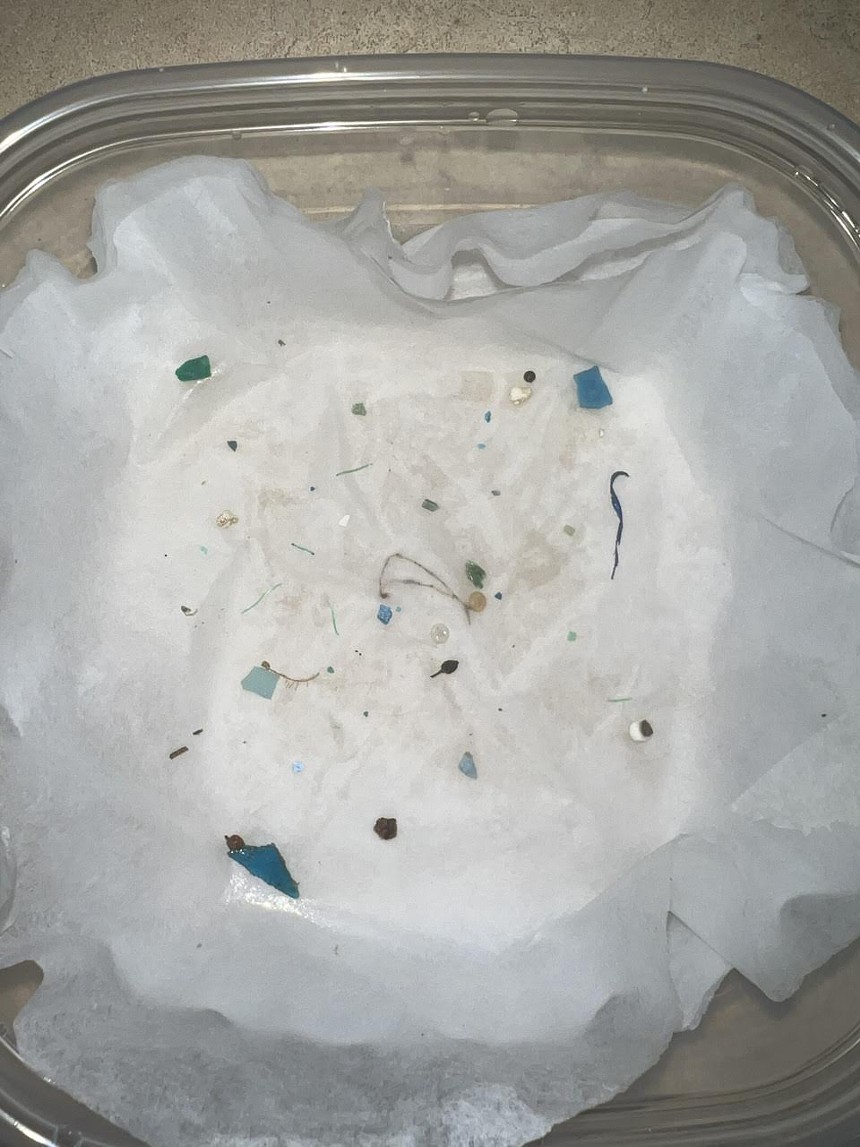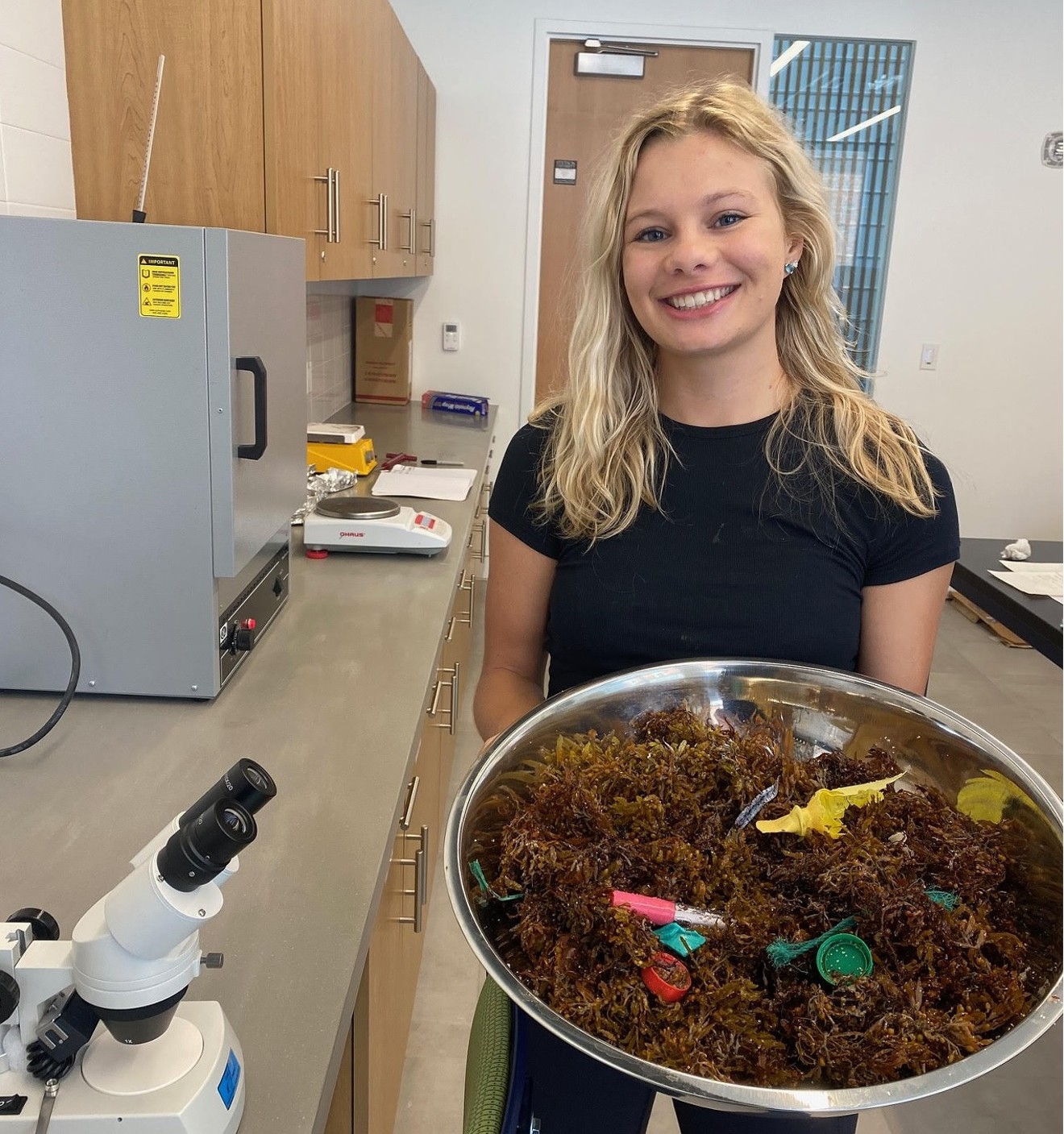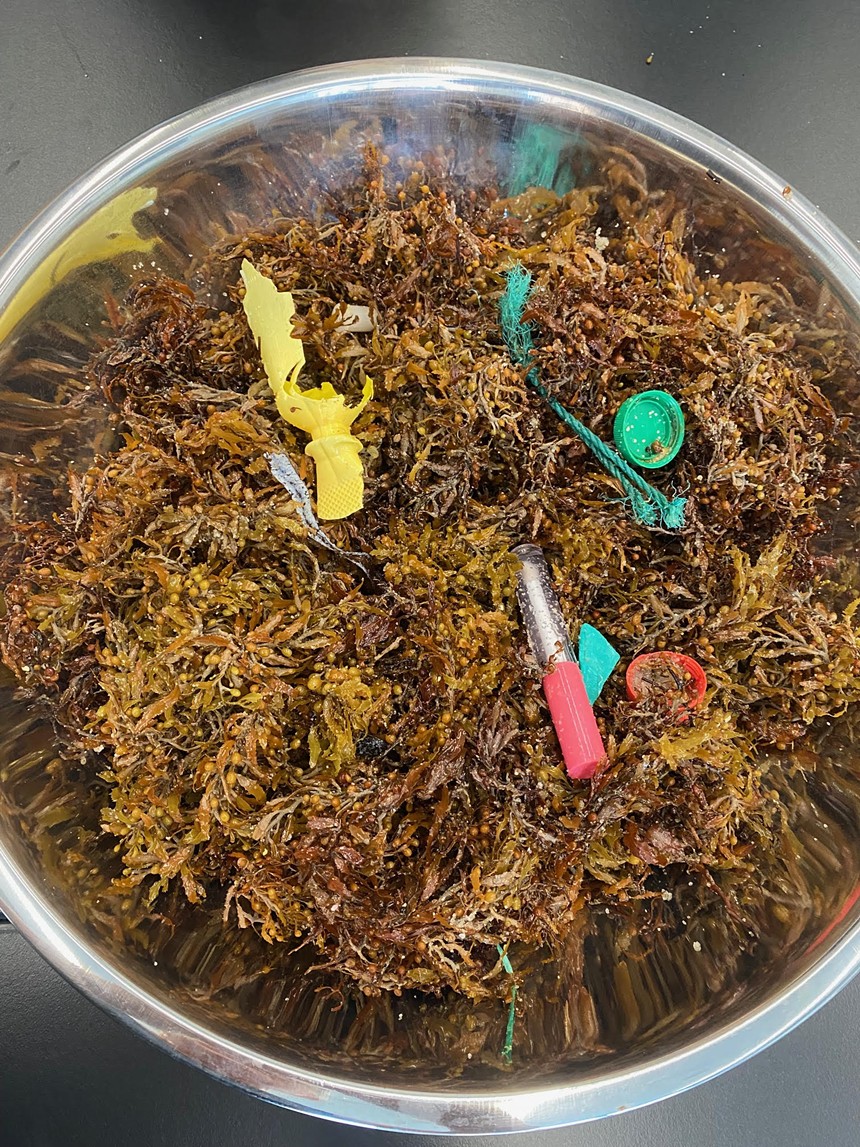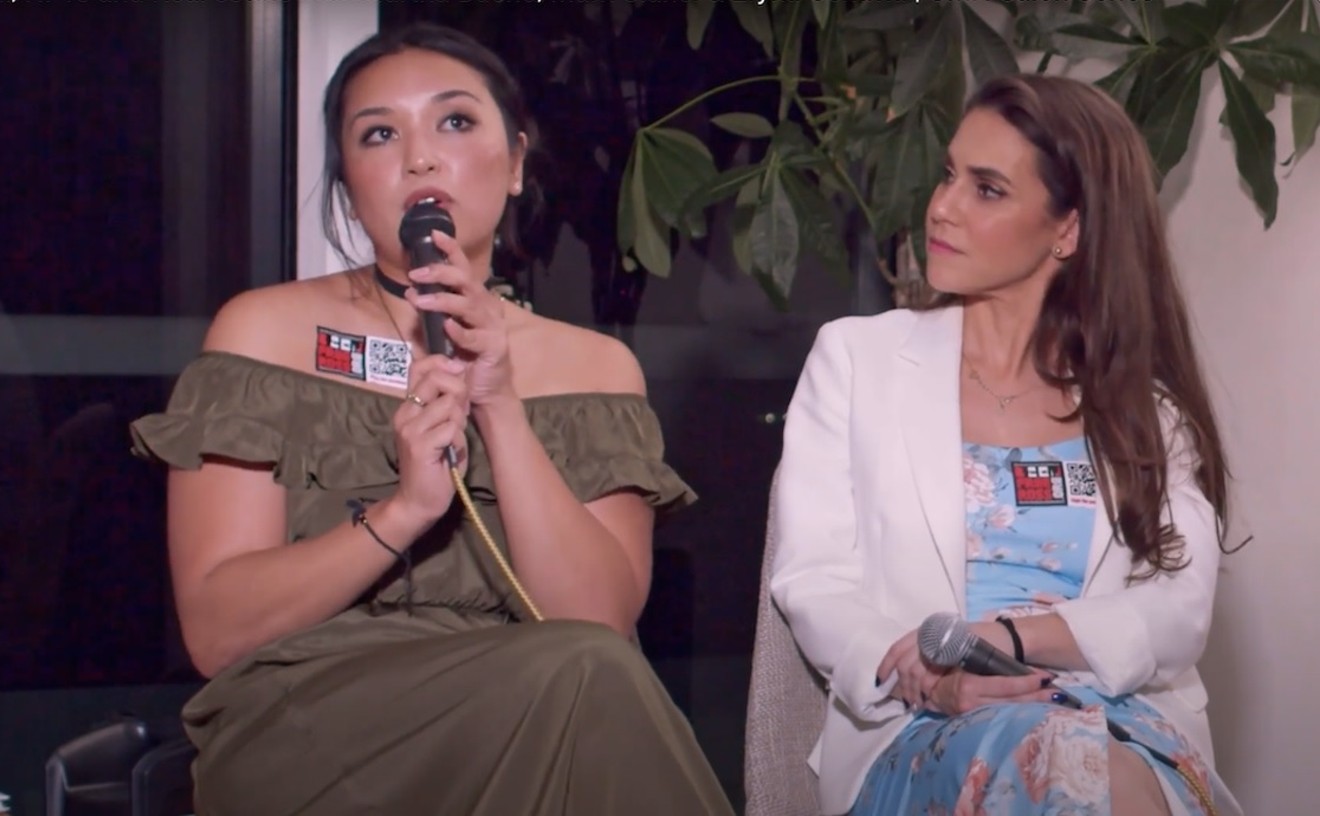In a new study, Stetson University student Charlotte Kraft and environmental science professor Wendy Anderson have discovered that a strikingly high proportion of the stinky brown seaweed piles arriving on shore consists of seaborne plastic pollutants.
"We have a lot of single-use plastics and microplastics that are out in the ocean," Kraft tells New Times. "They get broken down into smaller pieces, such as plastic nurdles, balloons, ribbons, microfibers, and fishing line ropes. I have a whole slew of different things I found in there."
Floridians should be familiar with the seaweed, algae under the genus sargassum, as it has been forming in an expansive belt in the Atlantic Ocean and landing on beaches for ages. But over the last decade, the belt has been getting larger and forming earlier in the year, bringing heavy deposits of seaweed to South Florida shorelines months in advance of the typical summer arrival.
Though research is ongoing to pinpoint the cause of the ballooning seaweed formation, Kraft and other scientists suggest that it's linked to nutrient-polluted outflows from South America.
"It gets fed from the nitrates that come from the Amazon River Basin, which is why it's been growing bigger along with climate change recently," Kraft hypothesizes. "It's why it's been washing up on our beaches way more often."
As blobs of this year's 5,000-mile stretch of sargassum have begun stinking up beaches in Florida over the last few weeks, Kraft has collected samples of the seaweed to see how much single-use plastic ends up entangled in it.
"Maybe we could be benefiting from all of the sargassum washing ashore in better ways if we didn't have so much plastic in the ocean," Anderson says. "Ultimately to us, it takes it back to: how do we stop the use of single-use plastic?"
Kraft says that 17 percent of the dry mass of a recent seaweed sample collected off a Palm Beach County beach was made up of plastic. She previously determined that plastic made up 3.4 percent of the mass of a sample from Volusia County. As part of her research, she has been tallying the types of plastics she is seeing, from fishing line to bottle caps.
Local governments have typically disposed of the stinky seaweed by collecting it from the shoreline and dumping it into landfills. The Miami Herald recently reported Miami-Dade County is looking to spend $6 million this year on seaweed cleanup.
While proposals have been mounting to convert the sargassum into fertilizer and compost to make better use of it, the plastic pollution may interfere with those efforts unless the contaminants can be easily and quickly removed, Anderson says.
"We have to sit here and spend hours picking out those macroplastics and microplastics," Anderson tells New Times. "We're not talking about big chunky things like whole plastic water bottles. Even just to get out the small particles, the microplastics, and the things that are like fibers of fishing rope, it's hard."
Anderson and Kraft describe an arduous process of trying to untangle the plastics from the seaweed. At times, the pieces are so intertwined into the algae that the researchers are unable to remove them.
"The really teeny tiny bits can even get incorporated into the tissues of the sargassum," Anderson says. "It kind of becomes one with the tissue."

Some of the microplastics found in the sargassum sample from Palm Beach County.
Photo by Charlotte Kraft
"The sargassum becomes like a big sweeper and that becomes a huge problem for the marine life and the creatures that eat this stuff on shore," Anderson tells New Times. "The little willets, plovers, sanderlings, and shorebirds that skitter around on the beach — they pick at the various invertebrates that live in [the seaweed]. They're picking those out as food, but they could also be grabbing chunks of plastic and getting that up in their digestive systems."
The researchers stress the ecological impact of plastic pollutants and the need to tamp down our waste stream by using more sustainable products. In the meanwhile, they say, the seaweed is playing a role in clearing out the unending stream of human refuse that makes its way out to sea.
"Granted, we don't want it on our beaches or in our ocean, but it is almost like nature's way of helping us clean the ocean," Kraft tells New Times.










